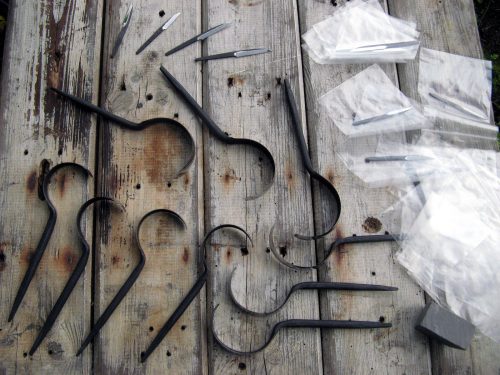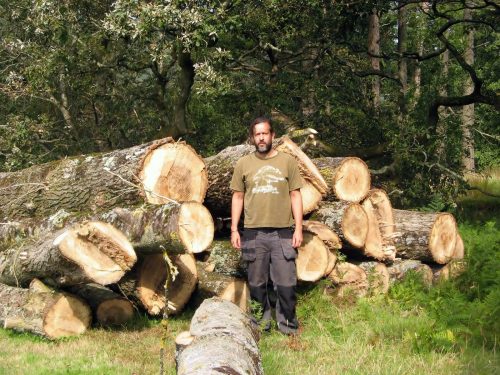I started writing a long post explaining the minutiae of my working practices with regard to quantity production, a weighty tome provisionally titled ‘ Quantity v’s Quality’ however before it was finished Lee Stoffer posted a video I found truly uplifting, it reminded me why we chose to live in rural Wales. This seemed a much better model to base a post on; my unfinished one was largely a list of processes I didn’t approve of and at points seemed like a bit of a rant; it is so easy for a blog to morph into a series of tirades, especially when comments are disabled. So I have ditched it for something more positive.
I have been meaning to change my profile picture for ages, last one was a hangover from my old site when I sold ornamental ironwork, at shows dressing up to look rustic was more important then. I couldn’t find a photo I liked until my son Jude took this picture of me fishing.
This was taken on a rock mark I have fished for the last 25 years, the water is fairly shallow and the best fishing always seems to be on a rising tide just before you are pushed back off the ledges, in this photo there is about 5 minutes before it is time to move, in the video you see Ade a couple of minutes after he should have moved back. Try as I might to find a fitting metaphor to tie this in to my tool making, I can’t, but its a truly resonant experience for me.
Lee’s Video:
This is the sort of work life balance I aspire to. But more than that the fishing has a much deeper meaning for me than just a leisure activity. If you look at it as purely a means of gathering dinner it was a pretty poor use of time for three adults ( although we looking up the price of having a line caught Bass that size sent to us – £45!) If we wanted to maximise our catch we should have bought in the best bait possible, hired a boat to take us to more reliable marks, and fished multiple rods or baits. A still more efficient way to put food on the table would be to buy to not fish at all and buy it all in.
This mark was chosen largely because it is a hike to get there, which means that we get the beach to ourselves. The view from the cliffs as we arrived early at low tide made my heart race a little faster. I know this beach well and collecting bait is not difficult, there is always something suitable, but a bonus spider crab and a surplus of prawns meant we also had some food sorted out before we even started fishing. The tide turned and as the water rose the chances of a fish increased. This mark is not that consistent and however perfect the conditions seem you can never guarantee a fish, which made the bass Lee caught, his first ever fish, even more special. The hike back over the cliff is sometimes a bit daunting but the completely different view of the beach at high tide was again a joy. To a large extent this is the approach I have taken with my tool making; its not the easiest nor the most financially rewarding but is the most fulfilling.



















































